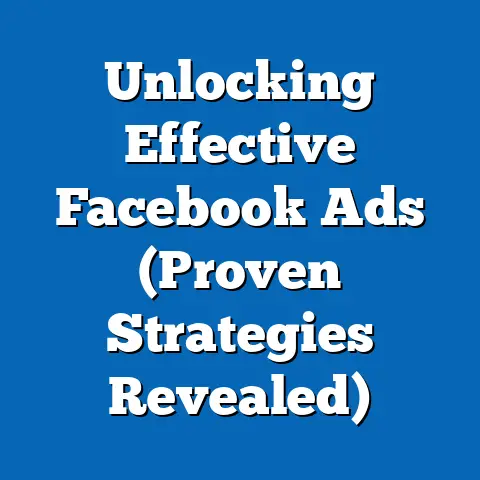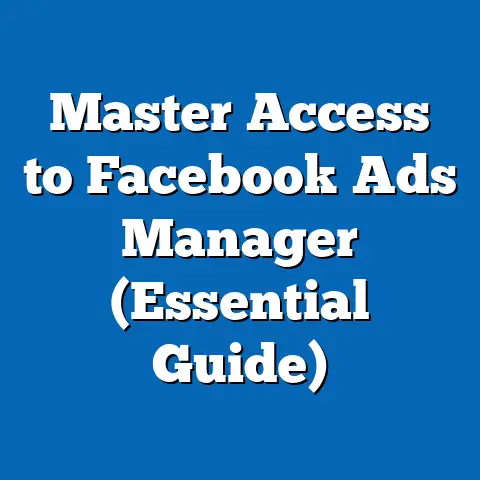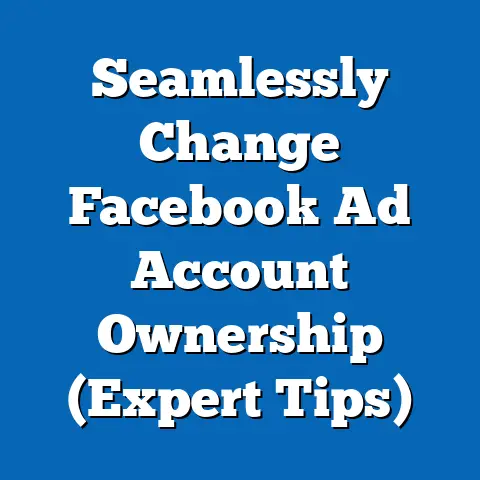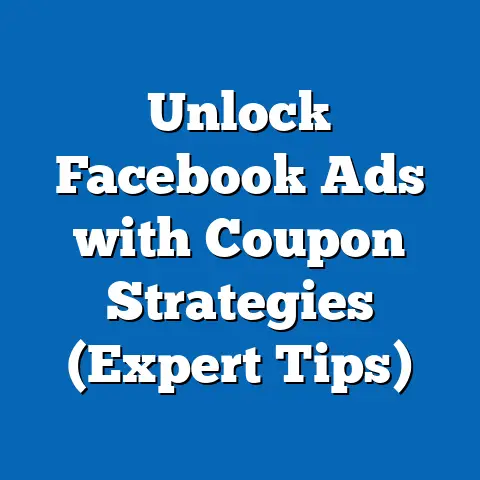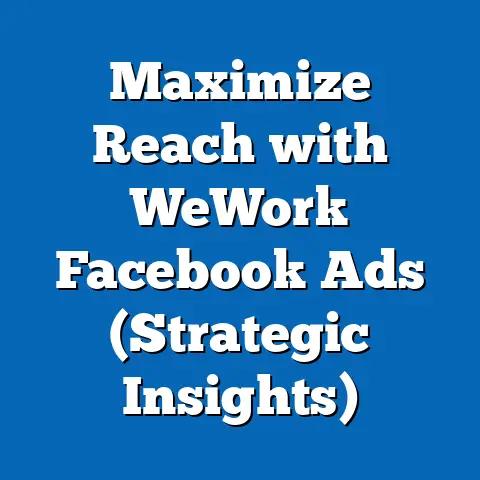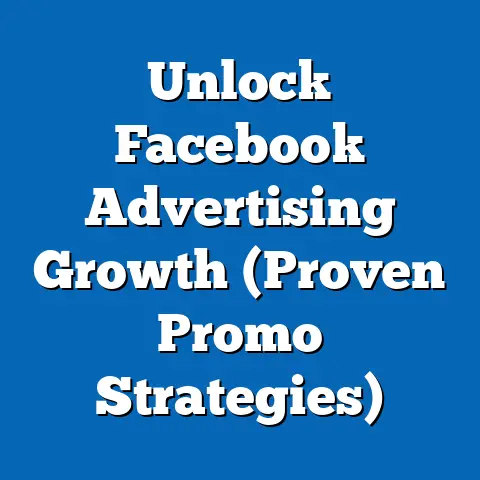Choose the Right Facebook Ad Objectives (Expert Guide)
Have you ever felt like you’re throwing money into a black hole when running Facebook ads? I know I have. Early in my digital marketing career, I launched a campaign with what I thought was a brilliant ad, only to see it flop miserably. The culprit? I chose the wrong objective. Did you know that choosing the wrong objective for your Facebook ad campaign could cost you thousands of dollars in wasted ad spend? It’s a harsh reality, but a very real one.
Selecting the right Facebook ad objectives is not just a small detail; it’s the cornerstone of a successful campaign. It’s the difference between reaching the right people with the right message and wasting your budget on an audience that’s simply not interested. Think of it as the GPS for your advertising journey – without the correct destination set, you’re just driving around aimlessly.
In this guide, I’ll walk you through the ins and outs of Facebook ad objectives. We’ll cover everything from understanding the different categories to aligning your objectives with your overall business goals and customer journey. I’ll share my own experiences, insights, and practical tips to help you make the right choices and avoid costly mistakes. By the end, you’ll have a clear understanding of how to select the perfect objective for each of your Facebook ad campaigns, ensuring you get the best possible return on your investment.
Here’s what we’ll cover:
- Understanding Facebook Ad Objectives: What they are and why they matter.
- The Three Main Categories: Awareness, Consideration, and Conversion objectives, broken down with examples.
- Factors to Consider: Key elements that influence your objective selection.
- Aligning Objectives with the Customer Journey: Targeting customers at each stage.
- Common Mistakes: Pitfalls to avoid when choosing objectives.
- Tools and Resources: Leveraging Facebook’s tools for smarter objective selection.
So, buckle up and let’s dive in!
1. Understanding Facebook Ad Objectives
What are Facebook Ad Objectives?
Facebook ad objectives are the goals you set for your advertising campaigns. They tell Facebook what you want your ads to achieve, whether it’s getting more people to see your brand, driving traffic to your website, or increasing sales. Think of it as telling Facebook: “Hey, this is what I want to happen with this ad!”
Facebook then uses this information to optimize your ad delivery, showing your ads to people who are most likely to take the desired action. For example, if your objective is “Conversions,” Facebook will show your ad to users who have a history of making purchases or taking similar actions.
Why are They Important?
I can’t stress this enough: choosing the right objective is paramount. It’s the foundation upon which your entire campaign is built. Without a clear objective, you’re essentially shooting in the dark.
- Targeted Optimization: Facebook’s algorithm is incredibly sophisticated. By setting a clear objective, you’re giving it the information it needs to find the right audience and optimize your ad delivery for the best results.
- Improved ROI: When your ads are shown to the right people, you’re more likely to achieve your desired outcome, whether it’s increased brand awareness, more website traffic, or higher sales. This leads to a better return on your investment.
- Measurable Results: Objectives allow you to track and measure your campaign’s performance. You can see how many people saw your ad, how many clicked on it, and how many took the desired action. This data helps you refine your strategy and improve your results over time.
Aligning Objectives with Overall Business Goals
This is where strategy meets reality. Your Facebook ad objectives shouldn’t exist in a vacuum. They need to be directly aligned with your overall business goals.
- Brand Building: If your goal is to build brand awareness, you’ll want to focus on objectives like “Brand Awareness” or “Reach.”
- Lead Generation: If you’re looking to generate leads, objectives like “Lead Generation” or “Traffic” (to a landing page) are more appropriate.
- Sales: If your primary goal is to drive sales, you’ll want to use objectives like “Conversions” or “Catalog Sales.”
I remember working with a client who wanted to increase sales but was running a campaign with the “Engagement” objective. They were getting a lot of likes and comments, but no actual sales. Once we switched to the “Conversions” objective and optimized the ad for purchases, their sales skyrocketed. This experience taught me the critical importance of aligning objectives with business goals.
Overview of Objective Categories
Facebook organizes its ad objectives into three main categories:
- Awareness: Generate interest in your product or service.
- Consideration: Get people to start thinking about your business and look for more information.
- Conversion: Encourage people to purchase or use your product or service.
Let’s break each of these down further:
2. The Three Main Categories of Facebook Ad Objectives
Awareness Objectives: Reaching the Masses
The primary goal of awareness objectives is to increase brand visibility and reach a wider audience. It’s about getting your name out there and making sure people know you exist.
- Brand Awareness: Show your ad to people who are most likely to remember it. Facebook uses data on user behavior to identify these individuals.
- Reach: Show your ad to as many people as possible within your target audience. This is great for maximizing exposure, but it doesn’t necessarily guarantee engagement or conversions.
When and Why Use Awareness Objectives
Awareness objectives are ideal for:
- New Businesses: When you’re just starting out and need to build brand recognition.
- Product Launches: When you’re introducing a new product or service to the market.
- Rebranding Efforts: When you’re trying to change or update your brand’s image.
I once worked with a local bakery that was struggling to attract new customers. They had amazing products, but nobody knew they existed. We ran a “Brand Awareness” campaign targeting people within a 5-mile radius of the bakery. The ads featured mouth-watering photos of their pastries and a brief description of their offerings. Within a few weeks, they saw a significant increase in foot traffic and online orders.
Effective Ad Campaigns Prioritizing Awareness
- Dove’s “Real Beauty” Campaign: This campaign focused on promoting a positive body image and challenging traditional beauty standards. It wasn’t about selling products directly; it was about building brand awareness and fostering a connection with their audience.
- Always’ “Like a Girl” Campaign: This campaign aimed to challenge gender stereotypes and empower young girls. It generated a lot of buzz and helped position Always as a brand that cares about social issues.
Takeaway: Awareness objectives are your starting point for building a strong brand presence on Facebook. They’re about getting your name out there and making a lasting impression.
Consideration Objectives: Engaging Your Audience
Consideration objectives focus on engaging your audience and driving interest in your business. It’s about getting people to interact with your content and learn more about what you have to offer.
- Traffic: Send people to your website, app, or Facebook event.
- Engagement: Get more people to like, comment, share, or react to your posts.
- App Installs: Encourage people to download and install your app.
- Video Views: Get more people to watch your videos.
- Lead Generation: Collect leads directly from Facebook ads.
- Messages: Start conversations with people on Messenger, WhatsApp, or Instagram Direct.
Strategies for Leveraging Consideration Objectives
- Traffic: Use compelling visuals and persuasive copy to entice people to click through to your website. Make sure your landing page is optimized for conversions.
- Engagement: Create engaging content that encourages people to interact with your posts. Ask questions, run polls, or host contests.
- App Installs: Highlight the benefits of your app and make it easy for people to download it directly from your ad.
- Video Views: Create high-quality videos that capture attention and tell a story. Use captions to make your videos accessible to people who watch with the sound off.
- Lead Generation: Offer a valuable incentive in exchange for people’s contact information. Make sure your lead form is easy to fill out and complies with privacy regulations.
- Messages: Use personalized messages to start conversations with potential customers. Offer assistance, answer questions, or provide product recommendations.
Case Studies: Effective Use of Consideration Objectives
- BuzzFeed: Known for their highly engaging content, BuzzFeed uses the “Engagement” objective to drive traffic to their website and increase brand awareness. Their ads often feature quizzes, listicles, and viral videos that are designed to be shared.
- Duolingo: The language learning app uses the “App Installs” objective to encourage people to download their app. Their ads highlight the benefits of learning a new language and make it easy for people to get started.
I had a client who was launching a new online course. We ran a “Traffic” campaign targeting people who were interested in the course topic. The ads featured a compelling headline, a brief description of the course, and a clear call to action. We also created a dedicated landing page that highlighted the benefits of the course and made it easy for people to sign up. The campaign resulted in a significant increase in website traffic and course enrollments.
Takeaway: Consideration objectives are all about getting people to engage with your business and learn more about what you have to offer. They’re perfect for building relationships and nurturing leads.
Conversion Objectives: Driving Sales and Actions
Conversion objectives are designed to encourage people to take specific actions, such as making a purchase, filling out a form, or visiting a store. It’s about turning interest into tangible results.
- Conversions: Encourage people to take valuable actions on your website, app, or in Messenger.
- Catalog Sales: Show people ads from your product catalog based on their interests and behavior.
- Store Traffic: Promote your physical store locations to people nearby.
The Importance of Conversion Objectives
Conversion objectives are crucial for businesses focused on driving sales and measurable actions. They allow you to track the ROI of your advertising campaigns and optimize your strategy for the best results.
Optimizing Campaigns for Conversions
- Target Audience: Identify your ideal customer and target your ads to people who are most likely to convert.
- Ad Creative: Use compelling visuals and persuasive copy to entice people to take action.
- Landing Page: Make sure your landing page is optimized for conversions. It should be easy to navigate, have a clear call to action, and provide all the information people need to make a decision.
- Tracking: Set up conversion tracking to measure the effectiveness of your campaigns. This will allow you to see which ads are driving the most conversions and optimize your strategy accordingly.
Insights on Audience Targeting and Ad Creative
- Lookalike Audiences: Create lookalike audiences based on your existing customers. This allows you to target people who share similar characteristics and behaviors with your best customers.
- Retargeting: Retarget people who have previously interacted with your website or app. This is a great way to re-engage potential customers and encourage them to take action.
- Compelling Visuals: Use high-quality images and videos that capture attention and showcase your product or service.
- Persuasive Copy: Write clear, concise copy that highlights the benefits of your product or service and includes a strong call to action.
Real-World Examples
- Shopify: The e-commerce platform uses the “Conversions” objective to drive sales for their merchants. Their ads often feature customer testimonials and highlight the benefits of using Shopify to start and grow an online business.
- Airbnb: The home-sharing platform uses the “Conversions” objective to encourage people to book accommodations. Their ads often feature stunning photos of properties and highlight the unique experiences that Airbnb offers.
I worked with an e-commerce store that was struggling to drive sales. We ran a “Catalog Sales” campaign targeting people who had previously viewed products on their website. The ads featured the products they had viewed and included a special discount code. The campaign resulted in a significant increase in sales and a positive ROI.
Takeaway: Conversion objectives are the key to driving sales and measurable actions on Facebook. They allow you to track the ROI of your advertising campaigns and optimize your strategy for the best results.
3. Factors to Consider When Choosing Objectives
Choosing the right Facebook ad objective isn’t just about picking one at random. It requires careful consideration of several factors to ensure your campaign is set up for success. Let’s explore the key elements that should influence your decision-making process.
Target Audience: Who Are You Trying to Reach?
Understanding your target audience is fundamental to any marketing effort, and it’s especially crucial when selecting your Facebook ad objective. Different objectives are better suited for reaching different audiences.
- Demographics: Consider age, gender, location, education, and income.
- Interests: What are their hobbies, passions, and interests?
- Behaviors: How do they interact with Facebook and other websites? What are their purchasing habits?
For example, if you’re targeting a younger audience with a new app, you might use the “App Installs” objective and focus on platforms like Instagram, where they are more active. On the other hand, if you’re targeting older adults with a high-end product, you might use the “Conversions” objective and focus on Facebook, where they are more likely to make purchases.
Budget: How Much Can You Spend?
Your budget plays a significant role in determining which objective is most appropriate. Some objectives, like “Reach,” are relatively inexpensive, while others, like “Conversions,” can be more costly.
- Small Budget: If you have a limited budget, you might want to start with awareness or engagement objectives to build brand visibility and generate interest.
- Large Budget: If you have a larger budget, you can afford to invest in conversion objectives and target a more specific audience.
I remember working with a startup that had a very limited budget. They wanted to drive sales immediately, but they couldn’t afford to run a “Conversions” campaign. We started with a “Traffic” campaign to drive people to their website and build a retargeting audience. Once we had enough data, we launched a “Conversions” campaign targeting the retargeting audience. This approach allowed us to maximize their limited budget and achieve a positive ROI.
Campaign Goals: What Do You Want to Achieve?
This seems obvious, but it’s worth emphasizing. Your campaign goals should be the primary driver of your objective selection.
- Brand Awareness: If your goal is to increase brand visibility, you’ll want to focus on objectives like “Brand Awareness” or “Reach.”
- Lead Generation: If you’re looking to generate leads, objectives like “Lead Generation” or “Traffic” (to a landing page) are more appropriate.
- Sales: If your primary goal is to drive sales, you’ll want to use objectives like “Conversions” or “Catalog Sales.”
A/B Testing: Finding the Best Fit
A/B testing is a powerful tool for determining which objective is the best fit for your campaign. By testing different objectives, you can see which one delivers the best results and optimize your strategy accordingly.
- Create Two Identical Campaigns: Run one with the “Traffic” objective and the other with the “Conversions” objective.
- Compare Results: Track key metrics like cost per click, conversion rate, and ROI.
- Optimize: Based on the results, choose the objective that delivers the best performance.
Analyzing Past Campaign Data: Learning from Experience
Your past campaign data can provide valuable insights into which objectives have been most successful for your business. By analyzing this data, you can identify patterns and trends that can inform your future objective selection.
- Track Key Metrics: Cost per click, conversion rate, ROI, etc.
- Identify Patterns: Which objectives have consistently delivered the best results?
- Adjust Strategy: Based on the data, refine your objective selection process.
Takeaway: Choosing the right Facebook ad objective requires careful consideration of your target audience, budget, campaign goals, and past campaign data. Don’t be afraid to experiment with different objectives and use A/B testing to find the best fit for your business.
4. How to Align Ad Objectives with Customer Journey Stages
The customer journey is the path a potential customer takes from first becoming aware of your brand to eventually making a purchase. Understanding this journey and aligning your ad objectives with each stage is crucial for maximizing the effectiveness of your campaigns.
The Different Stages of the Customer Journey
The customer journey typically consists of three main stages:
- Awareness: The customer becomes aware of your brand or product.
- Consideration: The customer starts to research and evaluate your product or service.
- Decision: The customer decides to make a purchase.
Correlating Stages with Facebook Ad Objectives
Each stage of the customer journey corresponds to specific Facebook ad objectives:
- Awareness Stage:
- Objectives: Brand Awareness, Reach
- Goal: Introduce your brand to a wide audience.
- Consideration Stage:
- Objectives: Traffic, Engagement, Video Views, Lead Generation
- Goal: Engage potential customers and provide them with more information.
- Decision Stage:
- Objectives: Conversions, Catalog Sales, Store Traffic
- Goal: Encourage customers to make a purchase or take a specific action.
- Objectives: Brand Awareness, Reach
- Goal: Introduce your brand to a wide audience.
- Objectives: Traffic, Engagement, Video Views, Lead Generation
- Goal: Engage potential customers and provide them with more information.
- Objectives: Conversions, Catalog Sales, Store Traffic
- Goal: Encourage customers to make a purchase or take a specific action.
Actionable Strategies for Each Stage
- Awareness Stage:
- Create visually appealing ads: Use high-quality images and videos to capture attention.
- Tell your brand story: Share your mission, values, and unique selling proposition.
- Target a broad audience: Focus on reaching as many people as possible within your target market.
- Consideration Stage:
- Provide valuable content: Share blog posts, articles, and videos that educate and inform your audience.
- Run contests and giveaways: Encourage engagement and generate leads.
- Target people who have shown interest in your brand: Use retargeting to reach people who have visited your website or interacted with your Facebook page.
- Decision Stage:
- Offer special discounts and promotions: Incentivize customers to make a purchase.
- Showcase customer testimonials: Build trust and credibility.
- Target people who are ready to buy: Use behavioral targeting to reach people who have a history of making purchases in your industry.
- Create visually appealing ads: Use high-quality images and videos to capture attention.
- Tell your brand story: Share your mission, values, and unique selling proposition.
- Target a broad audience: Focus on reaching as many people as possible within your target market.
- Provide valuable content: Share blog posts, articles, and videos that educate and inform your audience.
- Run contests and giveaways: Encourage engagement and generate leads.
- Target people who have shown interest in your brand: Use retargeting to reach people who have visited your website or interacted with your Facebook page.
- Offer special discounts and promotions: Incentivize customers to make a purchase.
- Showcase customer testimonials: Build trust and credibility.
- Target people who are ready to buy: Use behavioral targeting to reach people who have a history of making purchases in your industry.
Examples: Enhancing Ad Effectiveness
- Awareness: A new clothing brand runs a “Brand Awareness” campaign featuring stylish photos of their clothing line. The ads are targeted to people who are interested in fashion and have a history of shopping online.
- Consideration: A software company runs a “Lead Generation” campaign offering a free trial of their software. The ads are targeted to people who work in the industry and have shown interest in similar software solutions.
- Decision: An e-commerce store runs a “Conversions” campaign offering a special discount on their products. The ads are targeted to people who have visited their website and added items to their cart but haven’t completed the purchase.
I worked with a local restaurant that wanted to increase reservations. We created a three-stage campaign aligned with the customer journey:
- Awareness: We ran a “Brand Awareness” campaign targeting people within a 5-mile radius of the restaurant. The ads featured mouth-watering photos of their dishes and highlighted their unique atmosphere.
- Consideration: We ran a “Traffic” campaign driving people to their website to view their menu and learn more about the restaurant.
- Decision: We ran a “Conversions” campaign offering a special discount on reservations made online.
The campaign resulted in a significant increase in website traffic, online reservations, and overall revenue.
Takeaway: Aligning your ad objectives with the customer journey is essential for maximizing the effectiveness of your Facebook ad campaigns. By targeting customers at each stage with the right message, you can guide them through the sales funnel and increase your chances of driving conversions.
5. Common Mistakes to Avoid When Choosing Objectives
Choosing the wrong Facebook ad objective can be a costly mistake. It can lead to wasted ad spend, poor campaign performance, and missed opportunities. Let’s explore some common pitfalls and how to avoid them.
Misunderstanding Campaign Goals
One of the most common mistakes is not having a clear understanding of your campaign goals. Before you even start creating your ad, you need to know what you want to achieve.
- Lack of Clarity: If you don’t know what you want to achieve, you’re likely to choose the wrong objective.
- Conflicting Goals: Trying to achieve too many goals with a single campaign can dilute your message and reduce your effectiveness.
Solution: Take the time to define your campaign goals clearly. What do you want to achieve? Who are you trying to reach? What action do you want them to take? Once you have a clear understanding of your goals, you can choose the right objective to help you achieve them.
Ignoring the Customer Journey
As we discussed earlier, aligning your ad objectives with the customer journey is crucial. Ignoring this can lead to targeting the wrong people with the wrong message.
- Premature Conversion Ads: Trying to sell to people who are not yet aware of your brand is unlikely to be successful.
- Lack of Engagement: Not engaging with potential customers can lead to missed opportunities to build relationships and nurture leads.
Solution: Map out the customer journey for your business and create ad campaigns that target customers at each stage. Use awareness objectives to introduce your brand, consideration objectives to engage potential customers, and conversion objectives to drive sales.
Overlooking Audience Targeting
Even with the right objective, poor audience targeting can derail your campaign.
- Broad Targeting: Targeting too broad an audience can lead to wasted ad spend and poor results.
- Incorrect Targeting: Targeting the wrong people can result in your ads being shown to people who are not interested in your product or service.
Solution: Take the time to research your target audience and create detailed audience segments. Use Facebook’s targeting options to reach people who are most likely to be interested in your product or service.
Neglecting Ad Creative
Even with the right objective and audience targeting, poor ad creative can prevent your campaign from achieving its goals.
- Unappealing Visuals: Using low-quality images or videos can turn people off and reduce engagement.
- Weak Copy: Writing unclear or unpersuasive copy can fail to capture attention and motivate people to take action.
Solution: Invest in high-quality ad creative that is visually appealing and persuasive. Use compelling images and videos that capture attention and showcase your product or service. Write clear, concise copy that highlights the benefits of your product or service and includes a strong call to action.
Failing to Track and Analyze Results
Not tracking and analyzing your campaign results can prevent you from identifying what’s working and what’s not.
- Lack of Data: Without data, you can’t make informed decisions about how to optimize your campaigns.
- Missed Opportunities: Not analyzing your results can lead to missed opportunities to improve your campaign performance.
Solution: Set up conversion tracking to measure the effectiveness of your campaigns. Track key metrics like cost per click, conversion rate, and ROI. Analyze your results regularly and make adjustments to your strategy as needed.
I worked with a client who was running a “Conversions” campaign but wasn’t tracking their results. They were spending a lot of money on ads but didn’t know if they were actually driving sales. Once we set up conversion tracking, we discovered that their cost per conversion was extremely high. We made several changes to their targeting and ad creative, and within a few weeks, we were able to significantly reduce their cost per conversion and improve their ROI.
Takeaway: Avoiding these common mistakes can significantly improve the performance of your Facebook ad campaigns. By having a clear understanding of your goals, aligning your objectives with the customer journey, targeting the right audience, creating compelling ad creative, and tracking and analyzing your results, you can maximize your ROI and achieve your desired outcomes.
6. Tools and Resources for Objective Selection
Facebook provides a wealth of tools and resources to help advertisers choose the right objectives and optimize their campaigns for success. Let’s explore some of the most valuable ones.
Facebook Ads Manager: Your Central Hub
The Facebook Ads Manager is your primary tool for creating, managing, and analyzing your ad campaigns. It provides a comprehensive overview of your campaign performance and allows you to make adjustments to your strategy as needed.
- Objective Selection: The Ads Manager guides you through the objective selection process, providing clear descriptions of each objective and its intended purpose.
- Audience Targeting: The Ads Manager offers a wide range of targeting options, allowing you to reach specific demographics, interests, and behaviors.
- Ad Creative Creation: The Ads Manager provides tools for creating visually appealing and persuasive ad creative.
- Reporting and Analytics: The Ads Manager provides detailed reports and analytics that allow you to track your campaign performance and identify areas for improvement.
Facebook Audience Insights: Understanding Your Audience
Facebook Audience Insights provides valuable data about your target audience, including their demographics, interests, behaviors, and purchase habits. This information can help you make informed decisions about your objective selection and audience targeting.
- Demographics: Learn about the age, gender, location, education, and income of your target audience.
- Interests: Discover the hobbies, passions, and interests of your target audience.
- Behaviors: Understand how your target audience interacts with Facebook and other websites.
- Purchase Habits: Learn about the purchasing habits of your target audience, including what they buy, where they buy it, and how much they spend.
Facebook Pixel: Tracking Conversions
The Facebook Pixel is a snippet of code that you can install on your website to track conversions from your Facebook ad campaigns. This data allows you to measure the effectiveness of your campaigns and optimize your strategy for the best results.
- Conversion Tracking: Track valuable actions that people take on your website, such as making a purchase, filling out a form, or visiting a specific page.
- Retargeting: Retarget people who have previously visited your website or interacted with your Facebook page.
- Lookalike Audiences: Create lookalike audiences based on your existing customers.
Facebook Blueprint: Learning Resources
Facebook Blueprint is a free online learning platform that provides courses and resources on a wide range of Facebook advertising topics, including objective selection, audience targeting, ad creative, and campaign optimization.
- Comprehensive Courses: Learn from experts and gain a deeper understanding of Facebook advertising.
- Practical Tips and Best Practices: Get actionable advice that you can implement in your own campaigns.
- Certification: Earn a Facebook Blueprint certification to demonstrate your expertise in Facebook advertising.
Industry Blogs and Webinars: Staying Up-to-Date
Staying up-to-date with the latest Facebook advertising trends and best practices is essential for maximizing the effectiveness of your campaigns. There are many industry blogs and webinars that can provide valuable insights and information.
- Social Media Examiner: A leading source of social media marketing news and information.
- HubSpot: A marketing, sales, and service software company that provides a wealth of content on digital marketing topics.
- Neil Patel: A digital marketing expert who provides valuable insights and advice on his blog and YouTube channel.
Takeaway: Facebook provides a wealth of tools and resources to help advertisers choose the right objectives and optimize their campaigns for success. By leveraging these resources, you can make informed decisions, improve your campaign performance, and achieve your desired outcomes.
Conclusion
Choosing the right Facebook ad objectives is more than just a selection; it’s a strategic decision that can significantly impact your campaign’s success. As I’ve shared from my own experiences, selecting the appropriate objective can be the difference between a campaign that resonates and one that falls flat.
Remember, the key takeaways from this article are:
- Understanding the three main categories of objectives: Awareness, Consideration, and Conversion.
- Aligning your objectives with your overall business goals and the customer journey.
- Considering factors like your target audience, budget, and past campaign data.
- Avoiding common mistakes like misunderstanding campaign goals or neglecting ad creative.
- Leveraging Facebook’s tools and resources to make informed decisions.
By carefully considering these factors and following the tips and best practices outlined in this guide, you can choose the perfect objective for each of your Facebook ad campaigns and maximize your ROI.
Call to Action
Now it’s your turn! I encourage you to take a close look at your current Facebook advertising strategies. Are you choosing the right objectives for your campaigns? Are you aligning your objectives with your overall business goals and the customer journey?
Take the time to assess your current approach and consider how you can apply the insights you’ve gained from this article to optimize your future campaigns. Experiment with different objectives, test your ad creative, and track your results.
Don’t be afraid to make changes and adjust your strategy as needed. The world of Facebook advertising is constantly evolving, so it’s important to stay flexible and adapt to new trends and best practices.
By taking a proactive approach and continuously optimizing your campaigns, you can achieve your desired outcomes and unlock the full potential of Facebook advertising. Good luck!

